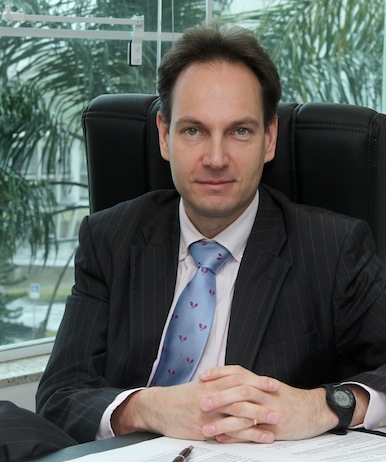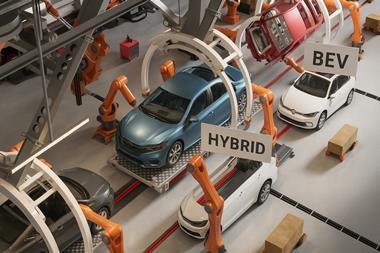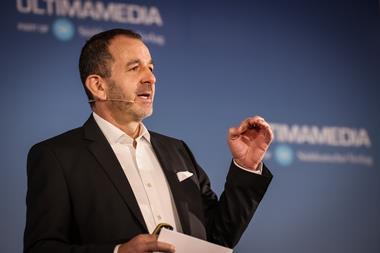Olivier Lefebvre, vice-president of the component supplier's Brazilian branch, says its NewTech paint installation is proving an effective import to South America
 Joanne Perry (JP): How important is South America as a production location for Faurecia Automotive Exteriors?
Joanne Perry (JP): How important is South America as a production location for Faurecia Automotive Exteriors?
Olivier Lefebvre (OL): South America represents 5% of the total sales of Faurecia [Group]. Concerning Faurecia Exteriors, we are a pretty new location as we started the operation in December 2012. We represent roughly 2-3% of the total sales of the Exteriors business of Faurecia, but we have installed capacity that will help us to grow fast in the future and to increase this market share in South America.
JP: Which OEMs are you currently serving in the region?
OL: We are serving two OEMs: PSA and Volkswagen. And we have launched two plants in the area: one in Malvinas in Buenos Aires [Argentina] and one here [São Bernardo do Campo, Brazil].
JP: What difficulties does South America present to tier suppliers such as Faurecia, for example in terms of JIT delivery?
OL: I don’t see any big difference in South America in terms of JIT delivery; Faurecia has a worldwide solution to serve its customers. What is very important to have in mind is that the OEMs are now expecting the same service and system all around the world, which is why they choose to go to global players like Faurecia. And this is exactly the target of the NewTech concept [see below].
The big challenge we are facing in South America is to be able to find, locally, good raw materials to put into our NewTech concept, in order for this raw material to cope with customer specifications and our new process.
The second big challenge was to find the right competencies on the local market to run the installation. It’s a very technical installation, a very automated one, so we used a specific training plan. Some of the training was done in Europe because it was the only place where we had the competencies to train the people we hired locally.
JP: But you don’t see any problems with the logistics, the infrastructure, the roads, the traffic?
OL: No, for JIT we usually locate our plants close to the OEMs. The problem is not the JIT deliveries. The roads and so on will have an impact when you have suppliers that are far away, because the distances in Brazil are amazing compared with Europe. And the average running time for a truck is not like in Europe, where it can be 70-80km per hour; here a truck will be more or less at 25-30km per hour, depending on the area. Because you have huge traffic [problems] and you have a level of road development which is very different from Europe. But for JIT deliveries it’s not a problem; if you have a good system, if train your people, you will be able to deliver to the customer. I don’t see a big issue.
"We have a plan to extend our NewTech system in South America and to continue the deployment of lines in future across the world"
– Olivier Lefevbre, Faurecia Exterior Systems
JP: Does the Brazilian Government’s Inovar-Auto programme affect Faurecia?
OL: The Inovar-Auto programme is mainly focused on OEMs; for localisation in Brazil they will receive some grants from the State. So we are not directly involved in this programme; we are involved indirectly. Some OEMs ask us to provide a special footprint of suppliers of R&D to be able to benefit from this grant from the State; we will propose to the OEM a special footprint or localisation of R&D here to be able to provide this solution and the OEM will take the benefits of the programme.
JP: And the programme is a good thing for Faurecia?
OL: Yes. This programme is basically to reinforce the number of jobs in Brazil. The target of the country is to increase the level of competencies and it’s good that we are able to reinforce the R&D competencies and the level of development here. So I think it’s a good thing.
JP: For Faurecia’s operations here in São Bernardo do Campo, do you source materials locally?
OL: Our target is to have 100% local [content] and is the main challenge I stressed before. We are near to this target today. We faced some difficulties at the beginning to find good material and a good arrangement but our strategy was to do as the OEMs do; that means to take our global suppliers for paint, for plastic raw material, and bring them with us to develop the specifications we need for the local materials to be used in our machines.
JP: So when you say near to the target, do you mean, say, 90%?
OL: If I look at only my own parts; because I have two types of parts in my plant. I have mandated parts that the OEM will oblige me to buy, which are usually parts that are used on the same platforms, for instance the lights. The OEM will buy one type of light to put on different types of cars. So, the OEM will say to me: “Buy at this supplier, these lights, at this price”. And for this, some of the parts come from Europe or Mexico because we have global sourcing from the OEM.
For the parts for which I am completely the master, I am maybe at 80%. But 20% I am still not able to localise. For some cases it’s very specific chemical products that today I am not able to find here – but only today. I have been here for one year running this business and the percentage of local sourcing has drastically improved. At the beginning I imported maybe more than 50% but actually we are able to find good solutions locally and develop them with robust partners.
JP: Are there any significant differences between automotive exteriors in South America and in other regions?
OL: Yes and no. On one side, the technical specifications of the products are roughly the same all around the world with global OEMs. On the other side, the design is far different in South America, mainly due to the regulations – safety and so on – which are different from one country to another. So the design of the bumper will be a little bit different from what we find in Europe, for instance, or in the US. But the thickness of the paint and the adhesion constraints are the same everywhere in the world now.
JP: Can you explain what Faurecia’s NewTech process involves?
OL: Historically in South America – and it is still the case for some competitors – painting is done manually. That means you have a huge line with lots of people inside spraying the paint on the bumpers manually. On top of the issue of health and safety in this unfriendly environment, this creates the problem of repeatability, of quality. And the most important things for a bumper are the adhesion and the colour matching.

So what NewTech brings is a standard solution of painting which delivers a high level of quality. The line is automated, so you have a standard application. It is also very compact. We used to work with very big lines; [now] we are more flexible and more able to adapt to customer variation or demand in terms of cars.
And the last point: the NewTech system is greener than the process we were using in the past. We are able to recycle our water, to recycle our solvent and to reduce our consumption of energy [by 25%; total CO2 emissions have also been cut by 95%].
JP: Does NewTech require a large equipment investment?
OL: Yes, of course. We are in a very capitalistic business in painting, involving heavy installation. And when you launch a line you need to take care to maintain it at a very good level because you need to run the line a huge number of years to get payback.
JP: NewTech has been implemented here in the São Bernardo do Campo plant and at the other facility you mentioned earlier, but what about the rest of South America?
OL: We are just at the beginning and we have only one year of experience of NewTech in South America. But the big achievement today is the quality, which is really impressive. The quality of the parts is our key achievement and something we are really proud of. We have a plan to extend our NewTech system in South America and to continue the deployment of lines in the future, not only in South America but across the world.
JP: Is there a timeframe for the South American expansion?
OL: The first project is already launched. We have a project with two painting lines with SOP [start of operations] next year in the north of Brazil [at Fiat’s upcoming automotive hub in Goiana, Pernambuco State].






































